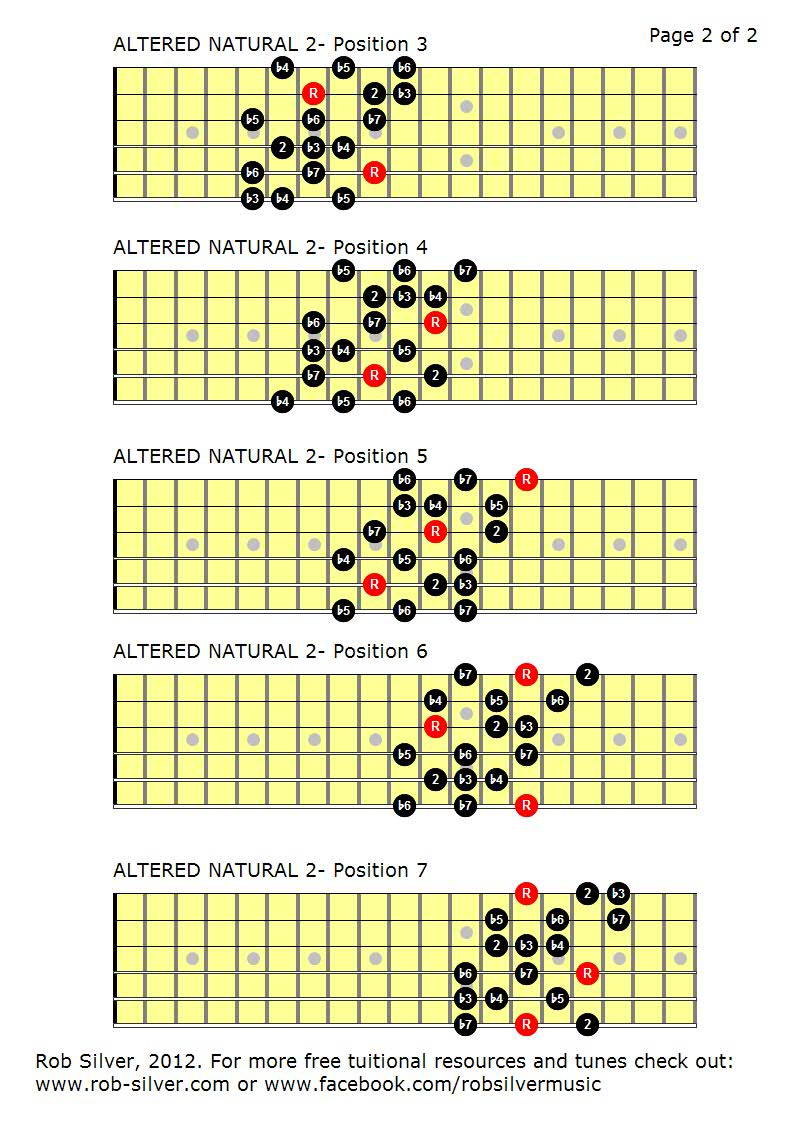
Join the Guitar Command newsletter mailing list to receive free guitar and bass lessons, news, reviews, info and offers direct to your inbox!įollow the link below to find out more and to sign up! (It’s completely free, you can unsubscribe at any time, and we’ll never share your details. Categories Guitar Lessons Tags Advanced Guitar, Jazz Guitar Post navigation Guitar Scales Chart – Click On Image For Information Related Pages The altered scale may sound quite strange at first, but if you persevere you will begin to create some very jazzy sounds – and you’ll also hear it being played by many contemporary jazz musicians. Improvisation With Altered Scale Backing Track F Major Scale – play at the seventh position. Example Guitar Solo Improvisation With Altered Scale Chord Sequence For Altered Scale Guitar Improvisationįor guitarists, here are the relevant scale diagrams: C Altered Scale – Play at the eighth position. In the first three bars, an F major scale is used, and in the fourth bar the altered scale is used for the C7#5 chord. Here is an example of a guitar solo which uses an altered scale over an altered dominant seventh chord. For a fuller explanation of this relationship, and to see various altered scale diagrams, visit this page: Altered Scale Altered Scales In Use He could play an A flat jazz minor scale that started on the G – a G altered scale – to create some very jazzy sounding tensions. Therefore, if you know the jazz minor scale, and encounter a dominant seven chord, play the jazz minor scale a semitone higher than the root note of the dominant chord, and you will be playing an altered scale.įor example, in a song in the key of C major, a jazz guitarist encounters a G7 chord which resolves to a C major chord. Altered Scales and Jazz Minor ScalesĪltered scales use the same notes as jazz minor scales a semitone higher.
#Altered scale full#
They introduce flattened fifths, sharpened fifths, flattened ninths and sharpened ninths, giving the full range of altered notes beloved of jazz improvisers. chord.Altered scales are most often played over dominant seventh chords. If the chord is F7alt., using the scale above, you can pick out the following chords:Īll of these arpeggios can be played over an F7alt. Things get real interesting when you start constructing chords from the altered scale. Move the root of any altered dominant 7th chord up 1/2 step and play melodic minor from there. So if you know all your melodic minor scales, then you already know all your altered scales. Others call it the diminished/whole-tone scale.īut in the final analysis, its just the 7th mode of melodic minor. Some people call the same scale the Mixolydian #4.

At Berklee they teach it as a Lydian b7 scale starting a tritone away from the root. Starting the scale on F, as you indicated, results in the 7th mode of F# melodic minor as JS pointed out. Altered Scale Theatre Company, puppetry and theatre company founded By Artistic Director and performer Austin Mitchel-Hewitt in 2014. Have fun!Ĭlick to expand.This is the correct scale but you can un-complicate your thinking by simply calling it the F# melodic minor scale.

It comes from the third mode of melodic minor. It's called the lydian augmented scale another name could be the whole-tone diminished scale: The inverse of this scale works well over augmented chords. So you have:Ĭ, C#, D#, E, F#, from the dominant diminished scale,Į, F#, G#, Bb, C from the whole tone scale. Now I have practiced the mode enough on its own to think of it as "the altered scale" nothing more and nothing less.Īnd here's a different take: another name for this scale is the diminished whole tone scale, since the first 5 notes come from a dominant diminished scale, and the last 5 notes come from a whole tone scale. I prefer to know precisely where the jazz modes come from, so it worked for me to think of it as starting on the 7th degree of the melodic minor. Gsaxman, that is another way of thinking of it. Anarkisti, I think your second to last note should be "E" rather than "F", in which case you are correct.


 0 kommentar(er)
0 kommentar(er)
